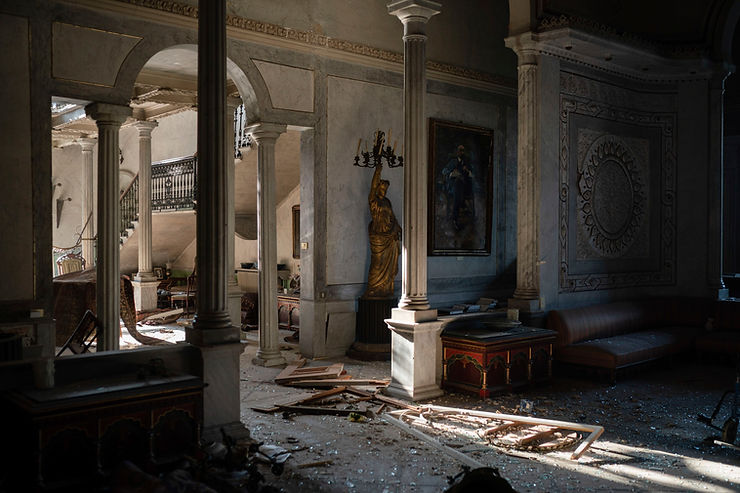By: Marina Han
Ginormous pillars surround the room, holding up its high ceilings. Hundreds of Belgian lion statues and dozens of statues of former jurists adorn the interior. Inner balconies surround the walls and sunlight streams in from the windows.
There are multiple rooms—some of which are occupied by lawyers and jurists while others are abandoned. The floors, ceilings, and walls are all crumpling apart. Water is seeping in, causing fungus to grow. Some corridors smell like alcohol and urine mixed together.
This is the Palace of Justice in Belgium, a 19th-century building that opened in 1833, located in the center of Brussels that holds the country’s judicial system. It used to be known as a beautiful palace and the world’s largest building. Now, it is known as the building that has been crumpling apart for decades and whose surface area covers only 9 square blocks.
The building has been under repair from 1984 and it has been so many years since then that the scaffolding surrounding it is damaged and is expected to be taken down, which gives the palace its nickname: “Palace of Scaffolding”.
However, André Demesmaeker, a 52-year-old architect for the Belgian government, is determined to repair the palace. He began as a freelance architect, but at 29, he joined the Belgian Buildings Agency. His hope is that this project is done by 2030, in time for Belgium’s 200th Birthday.
Demesmaeker loves his job, is unable to hide his excitement when he was on a 2-hour exploration of the Palace of Justice. While other people may think the building is an eyesore and cannot bear to see it, Demesmaeker sees it as a true beauty, a treasure trove of history’s secrets.
“That’s what I love,” he says to a New York Times journalist. “Trudge, crawl, search, investigate.”
Brussels is not a new place for Demesmaeker. “I was born in Brussels. I grew up in Brussels, and with some luck, I might even die in Brussels.” he shares.
Demesmaeker’s true love for this palace is what experts say makes him perfect for this job. “This monument has suffered greatly from a lack of love,” says Jean-Pierre Buyle to a The New York Times journalist, the chairman of the Poeleart Foundation, which campaigns to preserve the building.
Demesmaeker also collects objects that other workers consider as useless and toss them into a trash heap. He saves these collections of interesting debris in his office or home.
Belgium has three official languages, six parliaments, more than a dozen political parties, and a separatist movement. So it seems that Demesmaeker’s job would be filled by a master bureaucrat or someone who is multilingual, but Demesmaeker is neither. He admits to a New York Times journalist that he is not very good at languages and that he is confused about the functions of government.
When talking to the journalist, he states that he is not sure why the restoration of the Palace of Justice has taken so long. Red tape could be one factor. One former building agency official was arrested on corruption charges while the company that constructed the scaffolding went bankrupt.
The Palace of Justice has so much space to be worked on. Workers have to go step-by-step; only one of the four facades can be restored at a time. Each one takes approximately 4 years to complete, a timeline that can outlast budget and political will.
People are growing impatient; will this project be done in time for Belgium’s giant celebration or will it turn out to take decades to complete?











